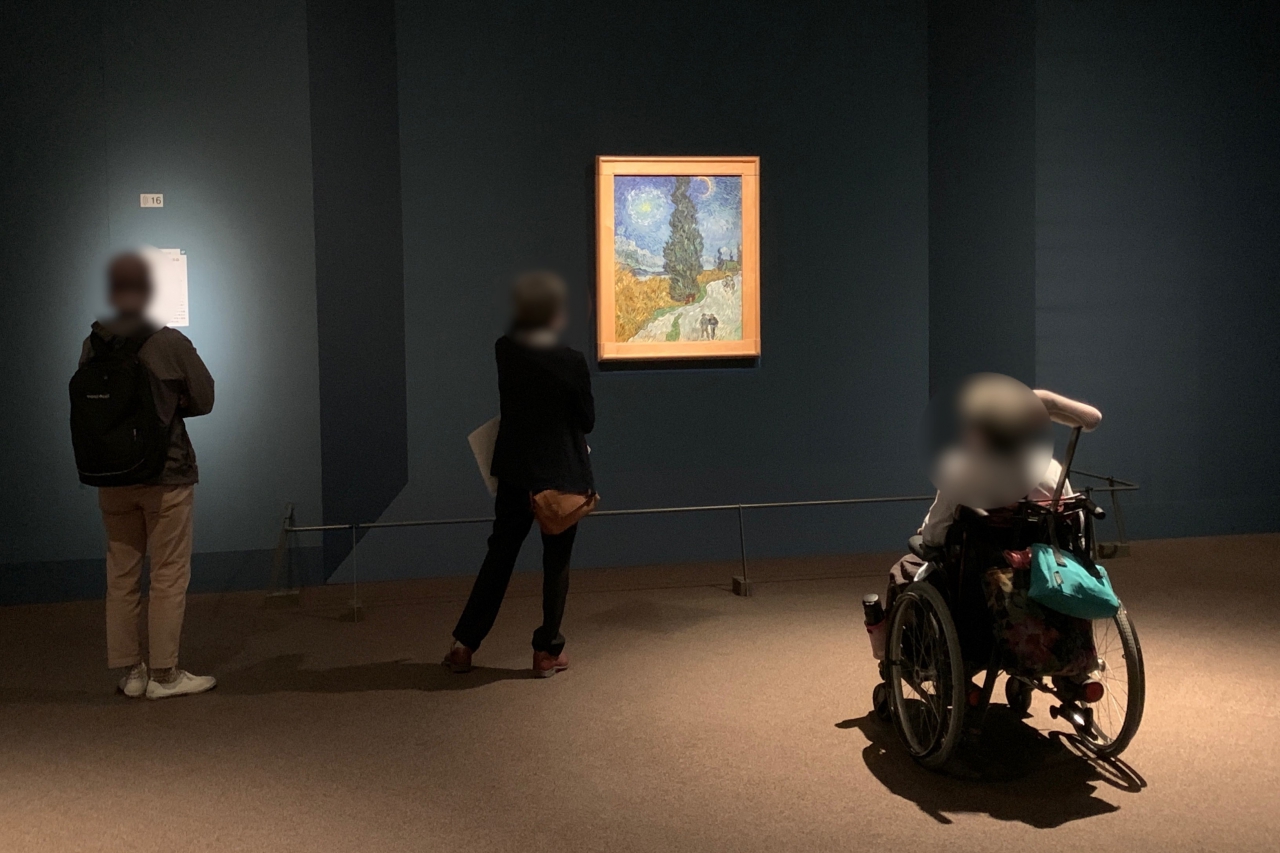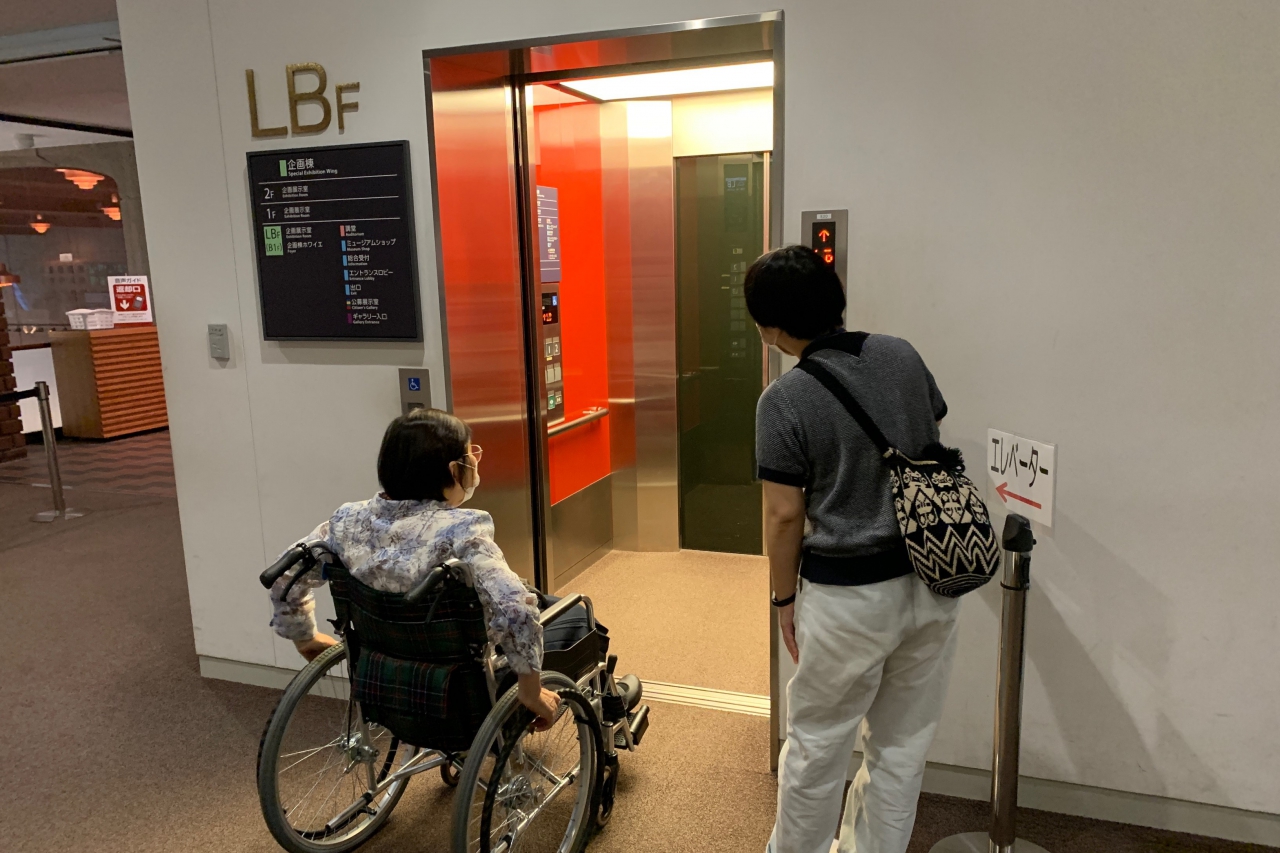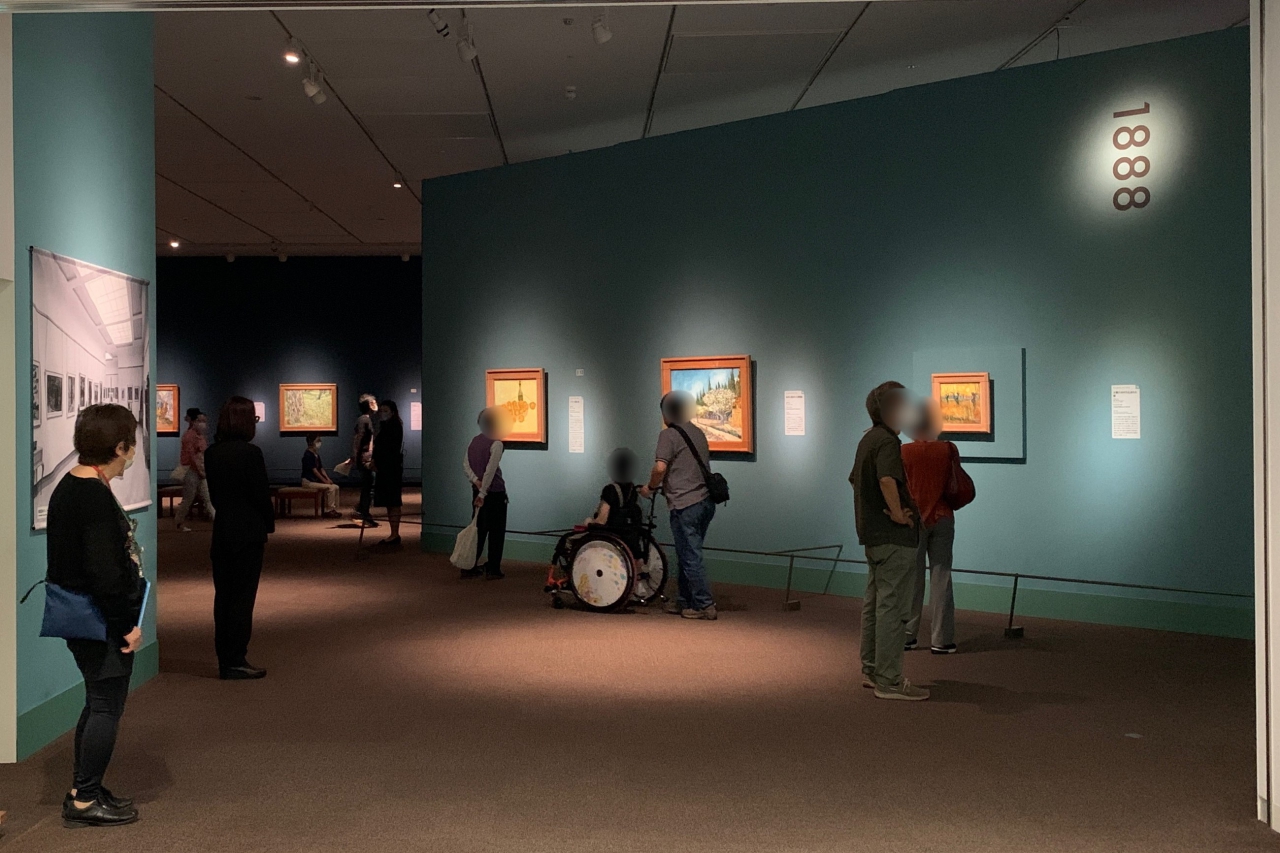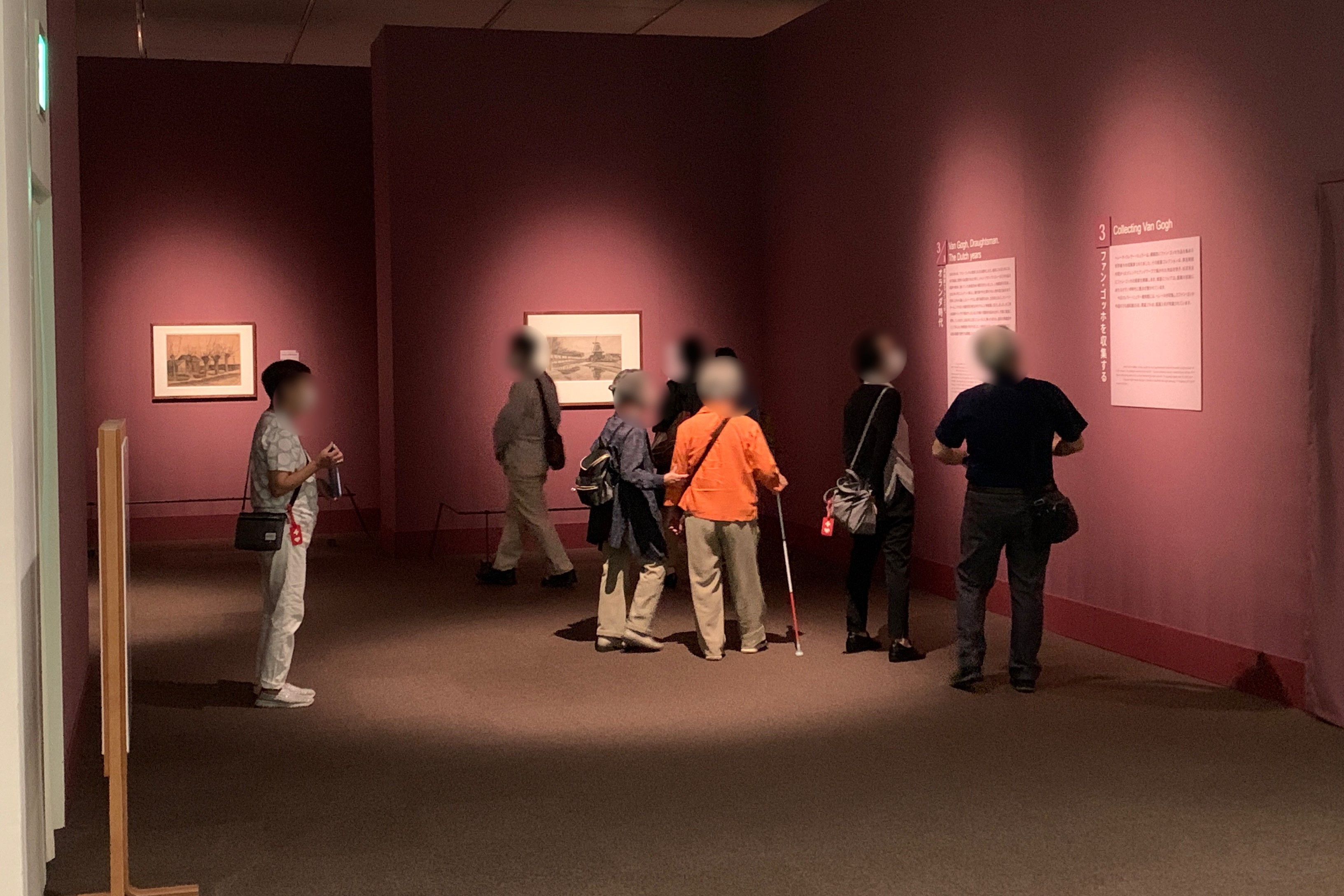Tokyo Metropolitan Art Museum

At the Tokyo Metropolitan Art Museum in Ueno Park, Tokyo, “Van Gogh Exhibition: Resonating Souls Helene and Fincent” is being held from Saturday, September 18, 2021.
The museum’s special exhibitions (most recently, “Hiroshi Yoshida Exhibition 70 Years After Death” and “Isamu Noguchi’s Discovery Road”), which introduce domestic and foreign masterpieces, are very popular every time, but this “Van Gogh Exhibition” ] Is crowded with many visitors as usual.
We want people in wheelchairs and people with various disabilities such as visual and hearing disabilities to appreciate the special exhibition with peace of mind. With that in mind, every time during the special exhibition, “people with disabilities” A special appreciation event for wheelchairs is being held, and the “Van Gogh Exhibition” was also held on October 11th (Monday), which is a closed day.
* A separate article details the venue and exhibited works of “Van Gogh Exhibition: Resonating Souls Helene and Fincent”. ⇒ https://www.culture.city.taito.lg.jp/ja/reports/22665
Art communicators who support “special appreciation for people with disabilities”

The “Special Appreciation Party for Persons with Disabilities” (hereinafter referred to as “Special Appreciation Party”) is a program that started in 1999. Since 2012, an art communicator (nicknamed “Tobira”), who is active in the “Tobira Project” in collaboration with the museum, Tokyo University of the Arts, and citizens, has been involved from the preparatory stage, helping with the day’s appreciation and speaking out. I am doing.
What is the “Door Project”?
A social design project based in a museum that nurtures a community through art. It was started in collaboration with Tokyo University of the Arts with the renewal of the Tokyo Metropolitan Art Museum in 2012. Citizens gathered from the general public, curators, university faculty members, and experts who are active on the front lines are based in the museum, and while making the best use of the cultural resources there, people and works, people and people, people and places We are developing activities to connect.
Who is the publicly recruited citizen through art as the art communicator “Tobira” (nicknamed “Tomi” and “Opening a new door” at the Tokyo Metropolitan Art Museum)? We are working on designing a place where people can have a flat dialogue and a community that connects people with diverse values.
About 40 people from Tobira, who are active for a three-year term, are recruited every year, and currently about 140 people of different ages and backgrounds, such as office workers, freelancers, housewives, retired people, and college students, are active. It seems that it has been done.
The activity is voluntary, but not a supporter given a role by the museum. He is an active player who proactively launches and realizes projects at museum sites while deepening his learning as an art communicator during his term. Until now, “Tobikan Yakan Kaikan Tour” where you can enjoy the charm of the architecture of the Tokyo Metropolitan Art Museum at night, and “Graduation Exhibition Tour” where you can talk with the artist about the graduation exhibition of Tokyo University of the Arts. Various programs utilizing the museum were carried out from a unique perspective.
The “special appreciation party” is also evolving into a better form while incorporating the ideas of “Tobira”. This time around 100 people, including “Tobira” and former “Tobira” who are active as independent art communicators in their respective communities after their term of office, welcomed the participants.
(* Hereafter, the situation on the day will be collectively referred to as “art communicator” because “Tobira” and former “Tobira” are involved in the “special appreciation party” as a whole.)
Time for people with disabilities to face the work without hesitation

About 400 people with disabilities and about 320 caregivers who have disability certificates, etc. participated in the “special appreciation event”.
The art communicators seemed to have been preparing for the “special appreciation party” many days before the event. For example, there are three types of pre-registration methods for the “Special Appreciation Party”: WEB form, email, and postcard. The participation certificate envelope sent by mail to those who applied for the postcard has the theme of the exhibition as a motif. I heard that he is pushing a handmade eraser stamp.
This is also an initiative devised by an art communicator with the desire to “make it a nice participation certificate.” I showed you the real thing, but it was a waste of quality to be used only here.



From the entrance to the reception, you will hear greetings to the participants such as “Hello” and “Please enjoy”.
Mr. Kumagai, a curator, said, “Is it okay to go? Maybe it will cause trouble?”
“It is important to create a welcome atmosphere that conveys the feeling of hospitality to the participants so that they will feel that the museum is a place where they can go.”

Wheelchairs for rent were prepared at the reception. I was wondering, “Isn’t the person who needs a wheelchair riding from the beginning?”, But there are many people with bad legs who want to use a wheelchair only when looking at the exhibition. I was surprised to see that a large number of wheelchairs were actually rented out in a blink of an eye.
As Mr. Kumagai said, such people may find it difficult to go to the usual exhibitions in consideration of their surroundings. Of course, it seems that wheelchairs are rented even on normal opening days, but if they are prepared in front of the entrance of the exhibition room like this, everyone seems to be comfortable and easy to use.
Here, I felt that I could get a glimpse of the reason why the repeat rate of the “special appreciation party” was so high.


Not only the exhibition room of the special exhibition, but also the entrance, escalators, elevators, etc., the art communicators will entertain you almost everywhere the participants pass. We kept in touch with each other in each position and saw them working closely together.
An unfamiliar sight is that a large elevator for luggage was in operation.
If many people in wheelchairs try to use the normal elevator for visitors at the same timing, the waiting time will inevitably occur. With the desire to enjoy the “special appreciation party” without stress, the art communicators at the site made suggestions for improvement, such as “If there are multiple wheelchairs, we will guide you to a large elevator.” It is impressive that we were discussing.


Since it is a viewing party that requires advance reservations, a very relaxing time will flow in the exhibition room. It seemed that all the participants were able to appreciate the work.

This is also in front of the main feature of this exhibition, “Country Road in Provence at Night”. At the time of normal opening, the front of popular works is often crowded, and wheelchair users tend to watch from behind. I could see that he was enjoying the time of one-on-one dialogue.

In the exhibition room, there is also an art communicator carrying a magnetic writing board for the hearing impaired. This is an initiative that started from this “special appreciation event” and is an attempt to create an environment where people with hearing impairments can easily talk to them when they have a problem in the exhibition room. While talking using the written conversation board, it is possible to have a sign language interpreter called from the reception if necessary.
I couldn’t see it at the time of the interview, but before the epidemic of the new coronavirus infection, the participants and the art communicator exchanged their impressions and opinions while watching the work, and each of them shared a good time.
Based on the idea of an art communicator, those who have difficulty seeing the work, such as those with low vision or wheelchairs, can see the work image at hand. He also carried out activities such as creating character display support so that the content can be conveyed to people with hearing impairments in the “One Point Talk” that explains the highlights of the meeting.

When asked about these various initiatives, Mr. Kumagai emphasized, “Art communicators are creating a community through art based in museums.” I will do something for people with disabilities. I am not in the place of this “special appreciation party” in the relationship between the supporter and the recipient. “
“What kind of place do you want to be in this space where people with and without disabilities spend time together? What kind of place do you want to be? Think about it, and communicate and act as necessary for that. Therefore, art communication There is no manual that summarizes what to do in Ta, “he said, which is often misunderstood as an art communicator.
Unfortunately, many efforts to avoid contact and closeness are not feasible nowadays. But it became painful feelings in the expression of the Art communicator lament the “I’m in great pains same space, is lonely not able to talk with everyone of the participants”, communication and way not to conversation, and even more real He is looking for a way to complement the dialogue outside of the space .
“Special appreciation party” under such circumstances. Participants who enjoyed Van Gogh’s world to their heart’s content for an hour or two left the museum with a very satisfying expression.
“I’m always looking forward to the next appreciation party.”

We also talked to the people who participated in the “special appreciation party”. What surprised me was that everyone I talked to had participated in the “special appreciation party” many times.
A woman in a wheelchair said, “This appreciation party is helpful because the number of people is limited. Normally, people are double, triple, or quadruple, but here you can see it in the forefront. I’m happy, “he smiled.
Another participant, who said he had been away from the museum he had visited because of his illness, said, “I’m always looking forward to the next event.” He shines his eyes and talks about his expectations.
A visually impaired woman participated at the timing when she read Maha Harada’s novel and was eager to see Van Gogh’s work, and she seemed to be happy. It seems that he watched the work while having a caregiving explain it.
“I think the audio guide was well done. I understood that Mr. Helene (* the collector of Van Gogh’s work featured in this exhibition) was such a person,” he said with satisfaction. While following the changes in his style, he was deeply moved, saying, “This is how Van Gogh arrived at <Sunflower>.”
“In an ordinary exhibition, even if a caregiving person walks with me, I get hit or kicked. On the contrary, even if I interrupt in front of a person, I feel sorry because I do not notice it. I’m grateful that you can see it with confidence if it’s so vacant. ”
Originally, the museum should be an open place for people with and without disabilities. Unfortunately, many people now hesitate to go to museums.
There may be more ingenuity in the “special appreciation event for people with disabilities”. However, I realized that the existence of such an appreciation party is a significant attempt to surely lower the hurdles for people with disabilities to go to the museum.
We will continue to pay attention to the movements of art communicators on how to create communication opportunities that have diminished in the Corona disaster.
In addition, in the special exhibition “Vermeer and 17th Century Dutch Painting Exhibition in the Dresden National Classical Painting Museum” to be held from January 22nd (Sat) to April 3rd (Sun), 2022 at the Tokyo Metropolitan Art Museum, “Obstacles” “Special viewing party for those who have” will be held.
400 people and their caregivers (up to 1 person) who have various notebooks such as the certificate of the physically disabled can apply. If there are many applications, it will be a lottery.
The application period is from January 5, 2022 (Wednesday) to January 24, 2022 (Monday).
If you are interested, please check the details. ⇒ https://www.tobikan.jp/learn/accessprogram.html
“Van Gogh Exhibition — Resonating Souls Helene and Vincent” Outline
| Session | September 18th (Sat) -December 12th (Sun), 2021 |
| venue | Tokyo Metropolitan Art Museum Planning Exhibition Room |
| Opening hours | 9: 30-17: 30 Fridays 9: 30-20: 00 (Admission is 30 minutes before closing) |
| Closed days | Monday * However, the room will be open on November 8th (Monday), November 22nd (Monday), and November 29th (Monday). |
| Admission fee | General 2,000 yen, university / vocational school students 1,300 yen, 65 years old and over 1,200 yen * Reservation required by date and time. * Free for high school students and younger. (Reservation with specified date and time is required) Click here for other details ⇒ https://gogh-2021.jp/ticket.html |
| Organizer | Tokyo Metropolitan Foundation for History and Culture Tokyo Metropolitan Museum of Art, Tokyo Shimbun, TBS |
| inquiry | 050-5541-8600 (Hello dial) |
| Exhibition official website | https://gogh-2021.jp |
